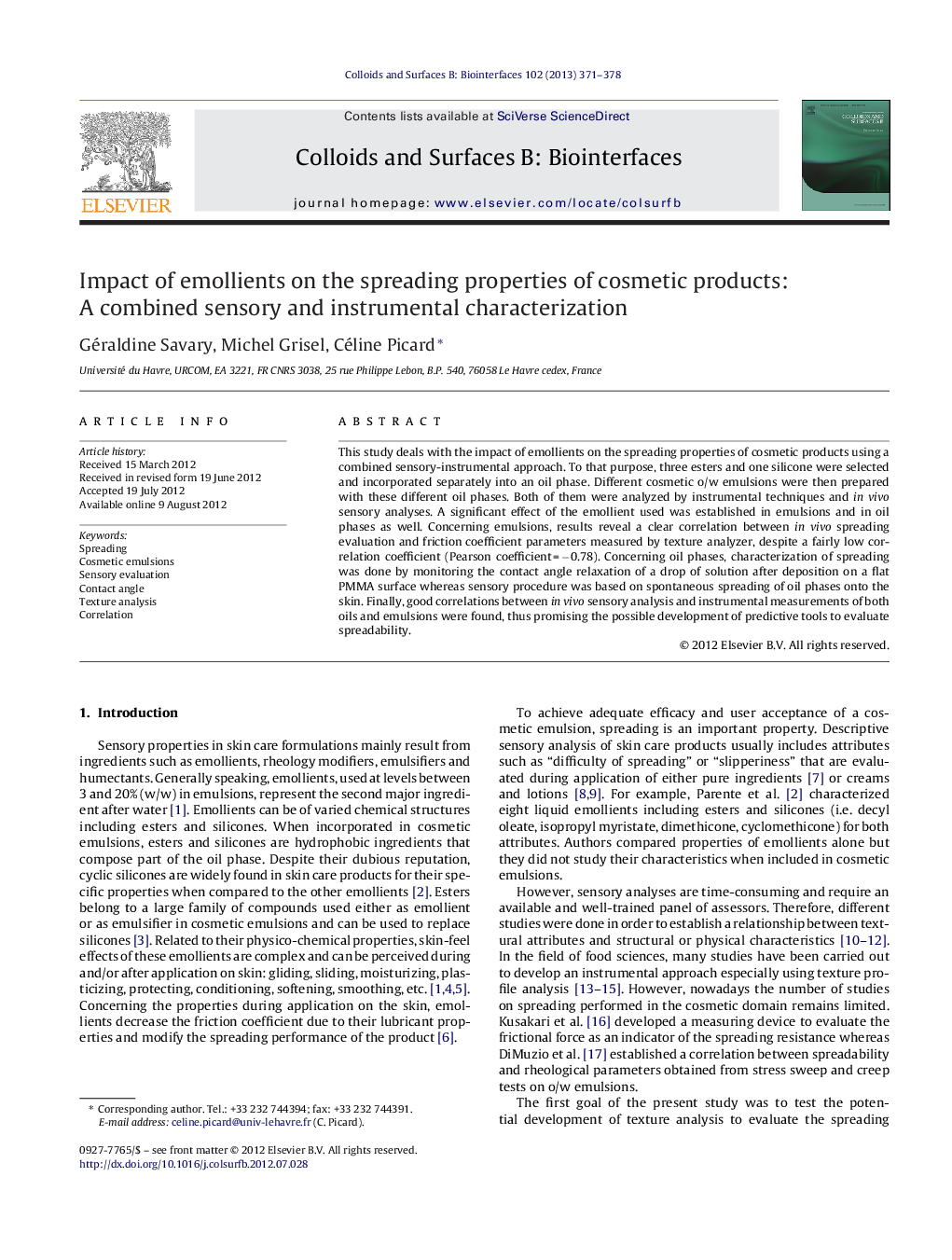| Article ID | Journal | Published Year | Pages | File Type |
|---|---|---|---|---|
| 600545 | Colloids and Surfaces B: Biointerfaces | 2013 | 8 Pages |
This study deals with the impact of emollients on the spreading properties of cosmetic products using a combined sensory-instrumental approach. To that purpose, three esters and one silicone were selected and incorporated separately into an oil phase. Different cosmetic o/w emulsions were then prepared with these different oil phases. Both of them were analyzed by instrumental techniques and in vivo sensory analyses. A significant effect of the emollient used was established in emulsions and in oil phases as well. Concerning emulsions, results reveal a clear correlation between in vivo spreading evaluation and friction coefficient parameters measured by texture analyzer, despite a fairly low correlation coefficient (Pearson coefficient = −0.78). Concerning oil phases, characterization of spreading was done by monitoring the contact angle relaxation of a drop of solution after deposition on a flat PMMA surface whereas sensory procedure was based on spontaneous spreading of oil phases onto the skin. Finally, good correlations between in vivo sensory analysis and instrumental measurements of both oils and emulsions were found, thus promising the possible development of predictive tools to evaluate spreadability.
Graphical abstractFigure optionsDownload full-size imageDownload as PowerPoint slideHighlights► Sensory procedures were developed to evaluate the spreading of emulsion and oil phase. ► The spreadability is significantly influenced by emollients (esters or silicone). ► Texture analyses developed on emulsion give results correlated with sensory. ► Spreading of oil phases and contact angle measurements do well correlate. ► Oil phase/emulsion relationship was evidenced for viscosity but not for spreading.
